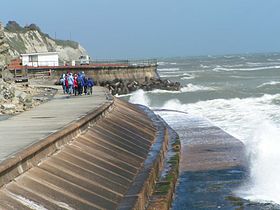Coastal Erosion: Home Protection, Risk Assessment & Prevention
Is the relentless advance of the sea threatening your coastal dream? Are you worried about the long-term stability of your beachfront property? You're not alone. This comprehensive guide will arm you with the knowledge and strategies needed to understand and combat coastal erosion, protecting your investment and peace of mind.
Understanding the Forces Behind Coastal Erosion
Coastal erosion is a natural process, but its effects are often exacerbated by human activities and climate change. It's crucial to understand the interplay of these forces to effectively address the threat. Several factors contribute to the loss of land along coastlines, ranging from natural weather patterns to human-induced changes.
One of the primary drivers is wave action. Waves constantly batter the shore, gradually wearing away the land. The energy of the waves, especially during storms, can have a devastating impact. Furthermore, tidal currents contribute to shoreline erosion by transporting sediment away from the coast. Storm surges, often associated with hurricanes and other severe weather events, can cause significant and immediate land loss.
In addition to these natural forces, human activities play a significant role. Coastal development, such as the construction of buildings and infrastructure, can disrupt natural sediment transport patterns, leading to increased beach erosion. Dredging and mining operations can also remove sediment from the coastal system, further destabilizing the shoreline. Climate change, with its associated sea level rise impact, is another major contributor. As sea levels rise, shorelines are inundated, and erosion rates accelerate. According to a 2024 study by the IPCC, global mean sea level is projected to rise between 0.43 and 0.84 meters by 2100 under intermediate scenarios.
The geological composition of the coastline also influences its vulnerability to erosion. Coastlines made of soft sediments, such as sand and gravel, are more susceptible to erosion than those composed of hard rock. The presence of vegetation, such as mangrove forests and salt marshes, can help stabilize the shoreline by trapping sediment and reducing wave energy. However, the destruction of these natural barriers can increase erosion rates.
Identifying Vulnerable Areas
Certain geographical features and locations are inherently more prone to erosion. Low-lying coastal areas, for instance, are particularly vulnerable to inundation and erosion due to sea level rise impact. Areas with a history of storm activity are also at higher risk. Understanding the specific vulnerabilities of your property is the first step in developing an effective erosion control strategy.
The Role of Climate Change
Climate change is not just a future threat; it's already impacting coastal erosion rates. Sea level rise impact is inundating low-lying areas, increasing the frequency and intensity of coastal flooding, and accelerating beach erosion. Warmer temperatures are also contributing to more intense storms, which further exacerbate erosion. Addressing climate change is essential for long-term coastal erosion prevention.
Assessing the Risk to Your Coastal Property
A thorough coastal risk assessment is essential for understanding the specific threats to your property. This involves evaluating factors such as the rate of erosion, the proximity of your home to the shoreline, and the potential impact of future storms and sea level rise. Several resources are available to help you conduct a coastal risk assessment, including government agencies, coastal engineering firms, and independent consultants.
One of the first steps is to determine the erosion rate in your area. This can be done by reviewing historical maps and aerial photographs, as well as consulting with local experts. You should also assess the geological composition of the coastline near your property. Is it made of sand, gravel, or rock? Softer sediments are more vulnerable to erosion. Finally, consider the potential impact of future storms and sea level rise. How high could storm surges reach in your area? What is the projected rate of sea level rise over the next several decades? These factors will help you determine the level of risk to your property.
Consider consulting with a coastal engineering expert who can conduct a detailed site assessment and provide tailored recommendations for protecting your property. These professionals have the knowledge and experience to evaluate the specific risks to your property and develop effective erosion control methods.
| Risk Factor | Description | Mitigation Strategies |
|---|---|---|
| Erosion Rate | How quickly the shoreline is receding. | Implement erosion control methods like seawalls or beach nourishment. |
| Storm Surge | The potential height of storm surges in your area. | Elevate your home or construct a barrier to protect against flooding. |
| Sea Level Rise | The projected increase in sea level over the next several decades. | Consider relocating your home or investing in long-term coastal zone management strategies. |
Effective Erosion Control Methods for Coastal Homes
Once you have assessed the risk to your property, you can begin to implement erosion control methods. A variety of techniques are available, each with its own advantages and disadvantages. The best approach will depend on the specific characteristics of your property and the surrounding environment.
Hard stabilization methods, such as seawalls and bulkheads, are designed to physically block the waves and prevent erosion. While these structures can be effective in the short term, they can also have negative impacts on the environment, such as disrupting natural sediment transport patterns and harming marine life. Soft stabilization methods, such as beach nourishment and dune restoration, aim to mimic natural processes and create a more sustainable solution. Beach nourishment involves adding sand to the beach to widen it and provide a buffer against wave action. Dune restoration involves planting vegetation on dunes to stabilize them and trap sediment.
Vegetation plays a crucial role in coastal erosion prevention. Planting native vegetation along the shoreline can help stabilize the soil, reduce wave energy, and provide habitat for wildlife. Mangrove forests, salt marshes, and sea grasses are particularly effective in preventing erosion. These natural barriers can absorb wave energy and trap sediment, protecting the shoreline from the full force of the ocean.
Ultimately, the most effective coastal zone management strategies involve a combination of hard and soft stabilization methods, as well as careful planning and regulation of coastal development. It's important to consider the long-term impacts of any erosion control project and to work with qualified professionals to ensure that the project is designed and implemented effectively.
Hard vs. Soft Stabilization: A Comparison
Choosing between hard and soft stabilization techniques requires careful consideration of the specific environmental context and the long-term sustainability goals. Each approach offers unique benefits and drawbacks.
- Hard Stabilization: (e.g., seawalls, bulkheads) Provides immediate protection but can disrupt natural sediment transport and harm marine ecosystems.
- Soft Stabilization: (e.g., beach nourishment, dune restoration) More environmentally friendly and sustainable, but may require ongoing maintenance and may not provide as much immediate protection.
The Role of Vegetation in Erosion Control
Vegetation acts as a natural barrier against wave action and helps stabilize the soil. Planting native species is a cost-effective and environmentally friendly way to protect your property. This provides a natural buffer that minimizes damage to the soil.
"Investing in vegetation and natural coastal zone management is often more cost-effective and environmentally sustainable in the long run compared to relying solely on hard engineering solutions." - Dr. Emily Carter, Coastal Geologist
| Technique | Description | Advantages | Disadvantages |
|---|---|---|---|
| Seawalls | Concrete or rock structures built along the shoreline. | Provides immediate protection against wave action. | Can disrupt sediment transport and harm marine life. Expensive to construct and maintain. |
| Beach Nourishment | Adding sand to the beach to widen it. | Creates a natural buffer against wave action. | Requires ongoing maintenance and can be costly. |
| Dune Restoration | Planting vegetation on dunes to stabilize them. | Helps stabilize the shoreline and provide habitat for wildlife. | May not provide as much immediate protection as hard stabilization methods. |
Navigating Coastal Regulations and Permits
Coastal zone management is heavily regulated at both the state and federal levels. Before undertaking any erosion control project, it's essential to understand the relevant regulations and obtain the necessary permits. Failure to do so can result in costly fines and delays.
Most coastal states have regulations governing development in the coastal zone. These regulations are designed to protect sensitive coastal resources, such as wetlands, dunes, and beaches. They often require permits for any construction or alteration activities that could impact these resources. Federal regulations, such as the Coastal Zone Management Act, also play a role in coastal zone management. This act encourages states to develop and implement comprehensive coastal management plans.
Understanding Your Local Regulations
Each coastal community may have its own specific regulations regarding coastal erosion prevention and development. Contact your local planning department or coastal zone management agency to obtain information on the regulations in your area. They can guide you through the permitting process and help you ensure that your project complies with all applicable requirements.
The Permitting Process: A Step-by-Step Guide
The permitting process for erosion control projects can be complex and time-consuming. It typically involves submitting an application to the relevant regulatory agencies, providing detailed plans for the project, and undergoing an environmental review. Be prepared to provide detailed information about the project's potential impacts on the environment. Consider hiring a consultant to help you navigate the permitting process. They can help you prepare the necessary documentation and represent you before the regulatory agencies.
FAQ: Addressing Your Coastal Erosion Concerns
Here are some frequently asked questions about coastal erosion and its impact on homes:
- Q: How quickly does coastal erosion typically occur?
A: Erosion rates vary widely depending on the location and environmental conditions. Some areas may erode by several feet per year, while others may experience minimal erosion. - Q: Will my homeowner's insurance cover coastal erosion damage?
A: Most standard homeowner's insurance policies do not cover damage caused by coastal erosion. You may need to purchase a separate flood insurance policy to protect against this type of damage. - Q: What are the long-term solutions for protecting my coastal property?
A: Long-term solutions often involve a combination of erosion control methods, coastal zone management strategies, and adaptation measures to address the impacts of climate change and sea level rise impact. - Q: How do I find a qualified coastal engineer or consultant?
A: Look for professionals with experience in coastal engineering and coastal zone management. Contact professional organizations, such as the American Shore and Beach Preservation Association, for referrals.


